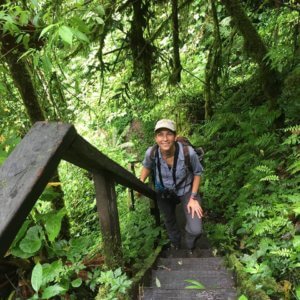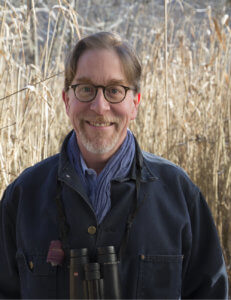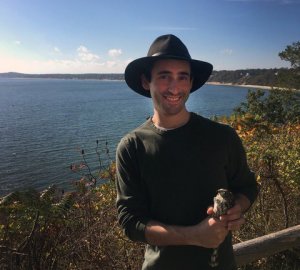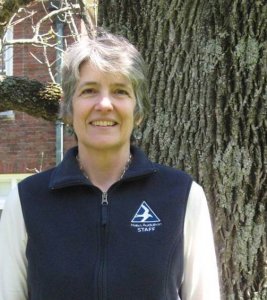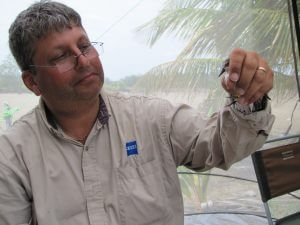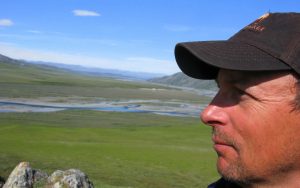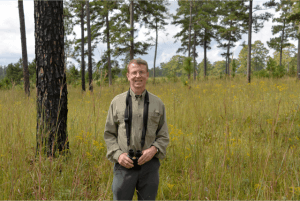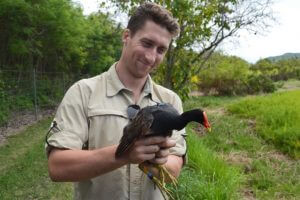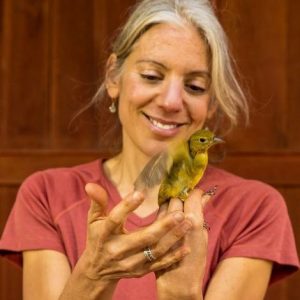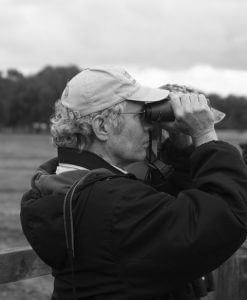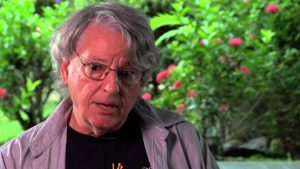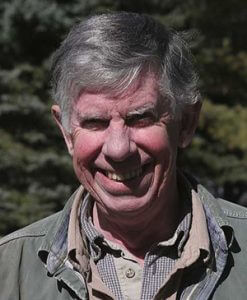Upcoming Programs
We are pleased to announce that Nuttall monthly meetings are back in person at Harvard.
Past Programs
(NOC members, login to view and listen to presentations)
Craig Benkman – Diversification and speciation in crossbills: the importance of a “charmed life”
Professor and Robert B. Berry Distinguished Chair in Ecology University of Wyoming After providing an overview of the patterns and processes driving crossbill diversification, this talk will focus on the premating reproductive isolating barriers contributing to speciation in crossbills. Crossbill are interesting in this regard because many crossbill taxa have diverged recently (<11,000 years ago)…
Read MoreDr. John Marzluff – Gifts of the Crow
Crows are mischievous, playful, social, and passionate. They have brains that are huge for their body size and exhibit an avian kind of eloquence. They mate for life and associate with relatives and neighbors for years. And because they often live near people—in our gardens, parks, and cities—they are also keenly aware of our peculiarities, staying away…
Read MoreDr. Pamela Loring – Tracking Offshore Movements of Shorebirds and Seabirds
Recent advances in wildlife tracking technologies now make it possible to track movements of small-bodied birds at unprecedented scales. Since 2013, the U.S. Fish and Wildlife Service and partners have deployed miniaturized transmitters on hundreds of seabirds (Common and Roseate Terns) and shorebirds (Piping Plovers and Red Knots) in the northeastern U.S. and Canada. This…
Read MoreEmily DuVal – Dancing Birds, Sexual Selection, and the Evolution of Cooperation in a Tropical Forest
Males of many species engage in fierce competition for mates. That competition can take the form of intense battles with rivals or flashy displays that attract females, but in just a few species, males do something truly unusual: instead of competing, they cooperate. Male lance-tailed manakins form long-terms two-male partnerships and display together for females,…
Read MoreRichard Prum – Mate Choice, Sexual Conflict, and Sexual Autonomy: Everything you ever wanted to know about duck sex, but were afraid to ask
Mate choice is well appreciated mechanism in the evolution of avian ornaments. However, sexual coercion and sexual violence can also influence avian breeding systems, leading to sexual conflict. This talk will explore sexual conflict in waterfowl, bowerbirds, and lek evolution. The conclusion is that freedom of choice matters to birds. Sexual autonomy actively evolves in…
Read MoreMatthew Kamm – Avian Real Estate in a Buyer’s Market: What Nest Box Programs Can Tell Us About American Kestrels
American Kestrels (Falco sparverius) are North America’s smallest raptor species. Once regarded as the most common raptor in America, kestrels have been declining across many parts of their large range over the past decades. Nest box programs aimed at addressing the limited breeding habitat for this species have popped up all across the continent, yet…
Read MoreDr. Katharine Parsons – Piping Plover Protection in Massachusetts: Recovering Populations and Facing Climate Change
Begun in 1987, Mass Audubon’s Coastal Waterbird Program (CWP) annually monitors Piping Plover (Charadrius melodus) nesting activity and protects habitat at 195 beach sites along 260 km of Massachusetts’ coastline. Nesting at these locations are approximately 220 pairs of plovers—a third of the Massachusetts population listed as “threatened” under state and federal endangered species laws. …
Read MoreDr. Edward O. Wilson – Half Earth: A plea to save 50% of our lands and oceans for humans and biodiversity
Dr. Wilson will be flanked by Peter Alden who will introduce him and guide a lively Q&A from Nuttall and audience members. Dr. Robert Ridgely will end with a short, illustrated presentation on the history of the Cordillera Azul Antbird recently named for Dr. Wilson. Edward O. Wilson is recognized as one of the creators…
Read MoreDr. David Mizrahi – Connecting the Dots: Understanding Dramatic Declines in a Widespread Migratory Shorebird
Dr. Mizrahi will review 20 years of research to unravel connectivity in Semipalmated Sandpipers populations throughout the annual cycle and determine what factors during the winter, migration and breeding periods underlie significant declines in populations, especially those migrating through the Western Atlantic region. He will also discuss conservation efforts that address several of the major…
Read MoreDr. Nils Warnock – Wings over borders – migration and conservation of shorebirds around the Pacific Basin
Nils will talk about the migration and conservation of shorebirds around the Pacific Basin, focusing on studies he and collaborators have done over the past 30 years. His initial research focused on the migration of small shorebirds like the Western Sandpiper and the Dunlin through western North America. More recent work looked at large-scale movements…
Read MoreDr. Geoffrey Hill – Speciation and Sexual Selection as processes to maintain Mitronuclear Coadaptation
Eukaryoic performance hinges on the coordinated function of the products of the nuclear and mitochondrial genomes in achieving oxidative phosphorylation. Because two genomes are involved, function is maintained only through perpetual selection for mitonuclear coadaptation. He will discuss how these fundamental features of the genomic architecture of eukaryotes results in both pre-and post-zygotic sorting for…
Read MoreCharles van Rees – Marshbirds in Paradise: The Ecology and Conservation of the Hawaiian Gallinule
The Hawaiian Islands have experienced waves of avian extinctions during Polynesian and European colonization, becoming a hotspot for the loss of bird species. Although the plight of Hawaiian forest birds is well known, conservation issues surrounding Hawaiian waterbirds and the wetlands that support them are less well understood. This presentation integrates the full research of…
Read MoreDavid Brinker – Rise and Fall of Northern Goshawks in the Central Appalachian Mountains
Persecuted for years as a robber of game, as attitudes have slowly changed and over the past 50 years, Northern Goshawks have expanded their breeding range and increased their population size in the Northeastern U. S., including the Central Appalachians. Since 1977 Dave Brinker has studied goshawks in both Northeastern Wisconsin and the Central Appalachian…
Read MoreDr. Daniel Mennill – Wild birds learn to sing from experimental vocal tutors
In eight groups of animals, including humans and songbirds, young animals learn to vocalize by listening to adults. Experimental evidence from laboratory studies supports this hypothesis for vocal learning, however there is no experimental evidence of vocal learning in wild animals. Dr. Mennill developed an innovative playback technology to simulate vocal tutors in the wild.…
Read MoreDr. Richard (Rob) Bierregaard – Tracking Ospreys in the Age of Silicon: Migration, Ecology, and Conservation
When, in the mid 1990s, technological advances permitted us to build radio transmitters capable of sending signals to satellites orbiting the earth and small enough to place on an Osprey, windows into their lives away from the nest were thrown wide open. Thanks to bird band recoveries, we already knew that most North American Ospreys…
Read MoreDr. Jonathan Regosin – Thirty Years of Piping Plover Conservation and Management in Massachusetts: Long-term Trends and Recent Developments
The Piping Plover is a state and federally threatened shorebird, with about 10,000 adults remaining, worldwide. Massachusetts has an important role to play in Piping Plover conservation, accounting for approximately 40% of the Piping Plovers breeding on the Atlantic Coast. The speaker will review 30 years of progress in Piping Plover conservation and research, challenges…
Read MoreDr. Amanda Rodewald – A Bird’s Eye View of Nature in the City
With urban land expected to triple between 2000-2030, understanding the ecology of cities is sorely needed to safeguard ecosystem services, biodiversity, and our own well-being. One common target of urban conservation is birds, owing to both their charisma and sensitivity to environmental change. Though urban development is a real threat to birds across all ecosystem…
Read MoreDr. James van Remsen – The cavalcade of discovery of new species and genera of South American bird … and how long will it continue?
In the 1950s, Ernst Mayr said that the age of discovery of new species of birds had largely ended. Since then, at least 125 new species of birds have been discovered in South America alone, including more than 40 by the LSU Museum of Natural Science. This represents an increase in species richness of about…
Read MoreDr. Joel Cracraft – How many “kinds” of birds are there on Earth: the intersection of science and conservation policy
Scientists have long debated the idea of species, and these different conceptions have impacted the way we understand how birds evolved. These debates have also influenced people’s views of avian diversity as well as avian conservation policy. This talk will lay out these debates and show how they have real-world consequences for conserving global avian…
Read MoreFrank Gill – Bird Species Taxonomy: Then and Now
Major changes in world bird taxonomy are underway, driven by advances in speciation concepts and practices. World bird lists are challenged to keep up with the surge in the number of species recognized, together with their nomenclature and phylogeny. Birders are challenged to keep up with the lumps, splits, name changes, and sequences. This talk…
Read More






